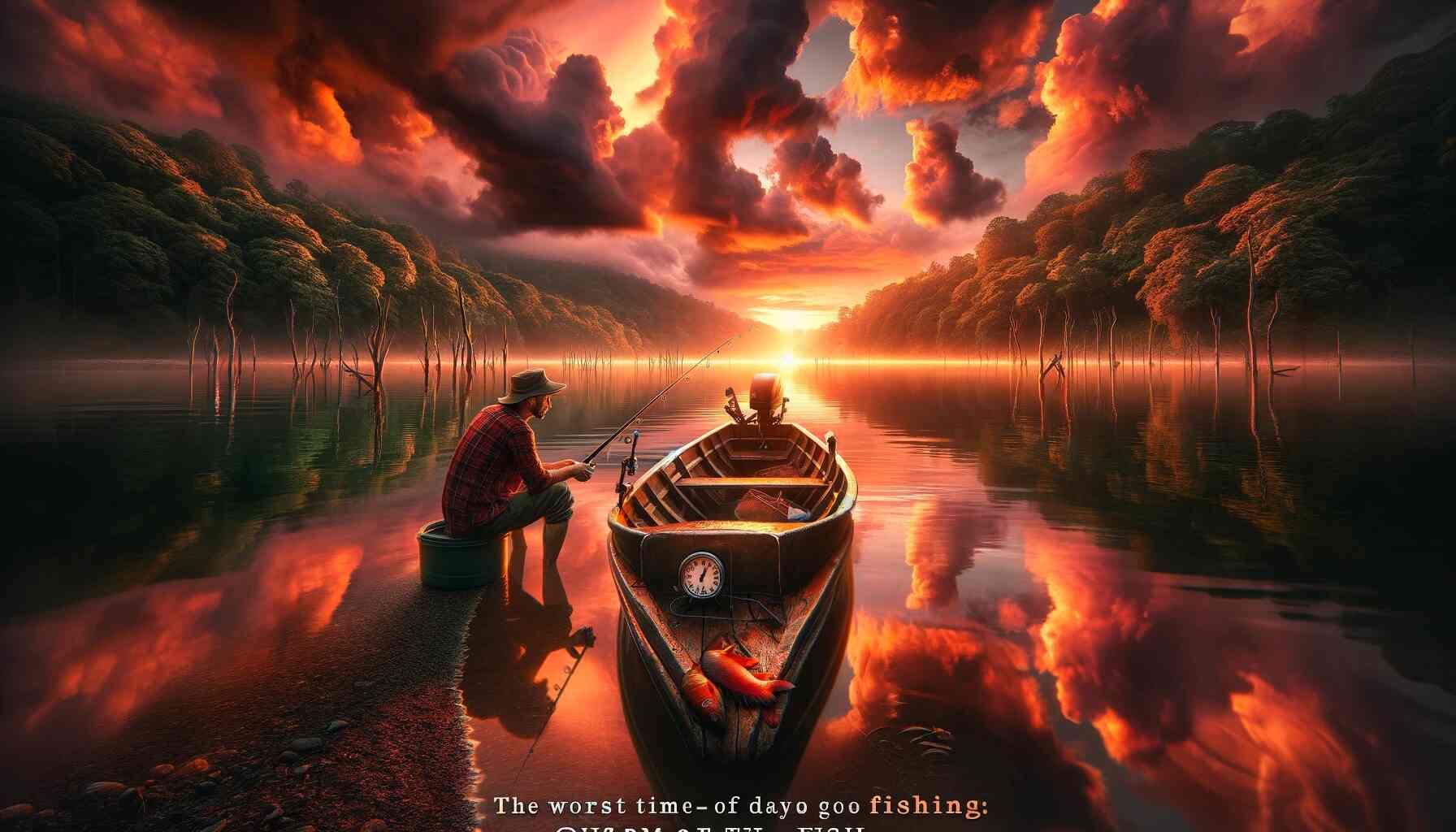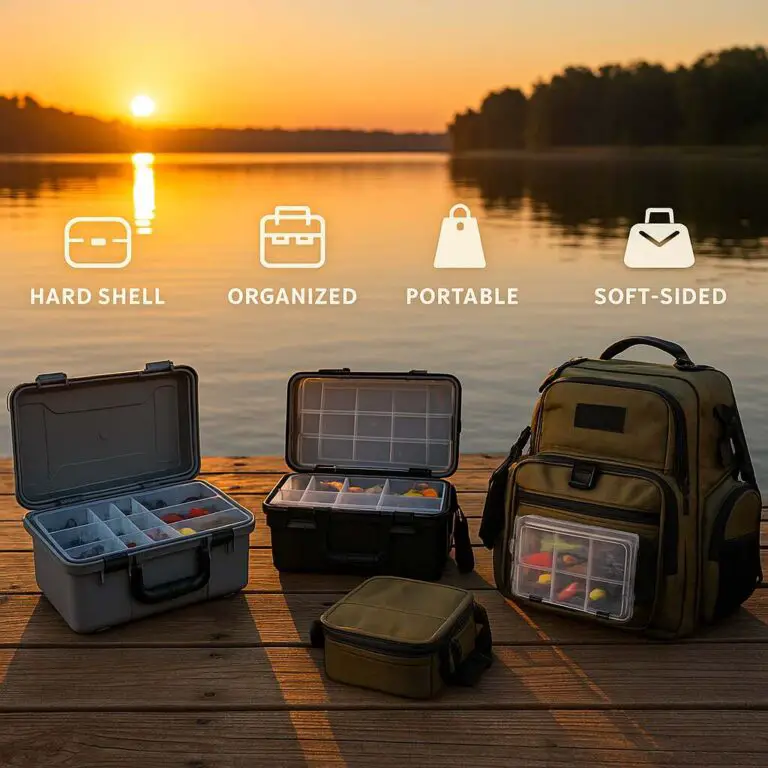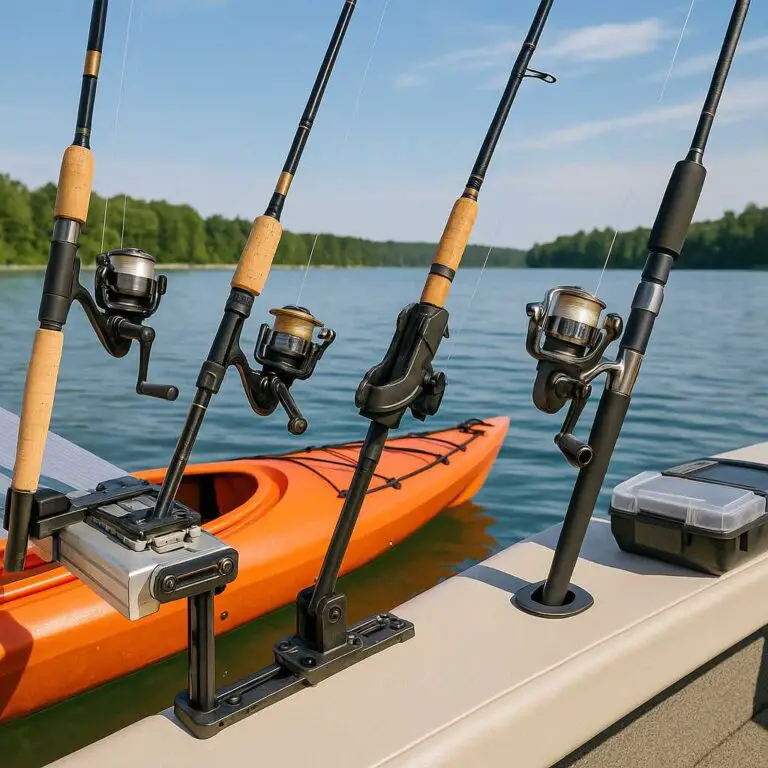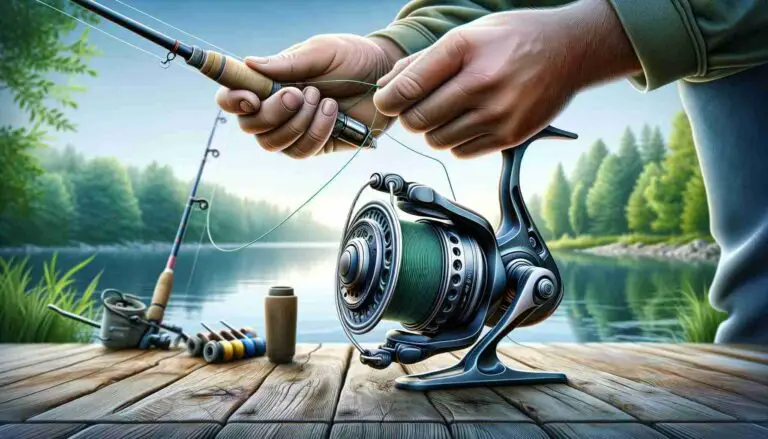Are you tired of coming home empty-handed after a long day out in the water? If you nodded along to that question, you’re in the right place. Today, I’m going to discuss a subject that is incredibly important but often overlooked – the worst time of day to go fishing.
Understanding Fish Behavior
As fishing enthusiasts, we all have our favorite spots, techniques, and baits that we swear by. However, something we often forget is that timing is everything. Fishing isn’t just about patience and technique; it’s also about understanding when the fish are most active and, conversely, when they’re least likely to take the bait.
Fish Behavior Factors
Fish are ectothermic creatures, meaning their body temperature is regulated by their surroundings. This factor largely influences their activity levels. As the water temperature rises and falls, so does their activity. For instance, during colder months, fish tend to be less active and therefore less likely to bite.
Light conditions also play a massive role in fish behavior. Most fish are sensitive to light and tend to feed more during low-light conditions. That’s why early morning and late afternoon are typically good times to go fishing. However, when the sun is at its peak during midday, the bright light can send fish into deeper waters, making them harder to catch.
Fish also have their feeding schedules. It may come as a surprise, but many fish species eat around the same time every day. Understanding these feeding times can help us determine the best and worst times to cast a line.
Species Variations
Now, it’s important to note that not all fish behave the same way. Different species have different habits and preferences. That means what could be a bad time for one species could be a great time for another.
So, it’s clear that understanding fish behavior isn’t just about knowing the worst time of day to go fishing, but also about being able to adapt and respond to the rhythms and habits of different fish species. This awareness will give you a significant edge in becoming a more successful angler.
The Worst Time to Go Fishing
Sometimes, the timing for fishing can make a big difference in your success. It’s like knowing when the fish are in the mood to cooperate and when they might be a bit finicky. The research and expert advice on the worst times for fishing generally points to midday as the least productive period. Here’s a summary of the key findings:
1. Midday
The worst time to go fishing is typically midday when the sun is at its highest. This period sees the highest water temperatures, leading to fish becoming less active and more lethargic. They tend to move to deeper waters or areas with shade, making them harder to catch.
2. Late Afternoon
Fishing in the late afternoon, before the sun begins to set, can also be less productive. The water is still relatively warm during this time, resulting in decreased fish activity.
3. Late Night
While night fishing can be effective for certain species, it presents challenges, especially for those inexperienced with this type of fishing.
4. Seasonal Variations
The effectiveness of fishing at different times of day can also be influenced by the season. For example, during warmer months, fish tend to retreat to cooler waters during the day, while in colder months, midday might be a more active period for them.
5. Species-Specific Behaviors
Different fish species have varied activity patterns. Bass, for instance, are more active during low-light conditions, while catfish are generally nocturnal. Trout and salmon also tend to be more active during low-light conditions.
6. Other Influencing Factors
Other elements like weather conditions, lunar phases, and fishing pressure also play significant roles in fishing success. Fish respond to barometric pressure
The Best Time of Day to Go Fishing
The best time of day to go fishing can vary depending on several factors, including the type of fish you’re targeting, the season, and local weather conditions. However, some general guidelines can be useful:
1. Early Morning
This is often considered one of the best times for fishing. Many fish are more active during the cooler, more oxygenated conditions of early morning. They may be feeding aggressively after a night of lower activity.
2. Late Afternoon to Dusk
Like early morning, the late afternoon leading into dusk can be a productive time for fishing. Fish may become more active again as the water cools and light levels decrease.
3. Overcast Days
Overcast or cloudy days can be great for fishing at any time. The reduced light and cooler temperatures can lead to increased fish activity.
4. Tides and Moon Phases
For saltwater fishing, tides play a significant role. Generally, fishing is better during moving tides. Also, moon phases can influence fish behavior, with some anglers finding better success around a full or new moon.
5. Seasonal Considerations
Depending on the season, fish behavior changes. For example, in spring or fall, midday might be a better time when the water is warmer than during early morning or late evening.
6. After Weather Changes
Fish often become more active after a weather change, such as a rainstorm or a significant temperature change.
Remember, these are just guidelines. Local knowledge and experience are invaluable, so it’s always a good idea to ask local anglers or bait shops for advice specific to your area and target species.
Here’s an entire article for the best time of day to go fishing: Best Time of Day to Go Fishing: Unleashing the Power of Timing
How Seasonal Changes Influence Fishing
While it’s true that the midday hours can often be less productive for fishing, it’s crucial to remember that seasonal changes can also have a significant impact on fishing conditions. You see, Mother Nature is quite the painter, and she uses a broad brush. Just as she changes the color of the leaves and the temperature of the air, she also influences the behavior of the fish in our lakes, rivers, and oceans.
1. Seasonal Variations
In the warmer months, especially during the height of summer, the daytime can often be the least productive time to fish. This is primarily due to the high temperatures and bright sunlight we discussed earlier. Fish, seeking respite from the heat, often retreat to deeper, cooler waters during the day, only emerging during the cooler parts of the day to feed.
2. Winter Shifts
However, the script flips during the colder months. In winter, the water is naturally cooler, and fish may not be as put off by the midday sun. In fact, the warmer temperatures in the middle of the day could make the fish more active, making it a potentially good time to fish. Still, it’s worth remembering that fish are generally less active in colder months, so you may not catch as many as during the warmer parts of the year.
3. Spring and Fall Opportunities
Spring and fall can also present unique conditions. Fish often feed aggressively in the spring as they prepare to spawn, making it a great time to fish. During fall, many fish feed heavily to prepare for the lean winter months, again making it a potentially good time to fish. However, the best times of day during these seasons can still vary, and avoiding the peak sunlight hours can often be beneficial.
Worst Fishing Times for Different Fish Species
I’ve talked broadly about fish behavior and how certain times, particularly during broad daylight, may not be optimal for fishing. But it’s important to remember that different fish species can have very different habits and preferences. So, let’s delve a bit deeper and discuss the worst fishing times for some popular fish species.
1. Bass Behavior
Bass are known to be more active during low-light conditions. This means that they usually feed early in the morning and late in the afternoon. During the heat of the day, especially in summer, they’re likely to retreat to cooler, deeper water. So, if you’re after bass, midday might not be the best time for you.
2. Catfish Behavior
Catfish are generally nocturnal feeders, which means they are most active during the night. They’re also quite active during dawn and dusk. However, during the day, particularly in the middle of the day, they tend to lie low, making it a less favorable time for catfish fishing.
3. Trout Behavior
Trout are a bit unique in that they can be active feeders during the day, but there’s a catch. They’re particularly sensitive to water temperatures and light conditions. In the heat of summer, the trout will likely retreat to colder, deeper waters during the day. On the flip side, during cooler months, you might have more luck during the daytime.
4. Salmon Behavior
Salmon fishing can be very dependent on the season and their migratory patterns. However, in general, salmon, like many other species, prefer feeding in low-light conditions. So, bright, sunny afternoons may not be the most productive time for salmon fishing.
Remember, these are general guidelines and can vary based on many factors, including the specific habits of local fish populations, weather conditions, and more. So, while it’s important to understand these habits, also be prepared to adapt to the conditions of the day and the behaviors of the fish in your local area. And, most importantly, enjoy the process! After all, every day spent fishing is a good day.
Exceptions to the Rule
Just as in life, there are exceptions to every rule in fishing. While it’s generally true that the scorching midday sun can make fishing more difficult, there are always outliers and circumstances that can defy this rule. Let’s discuss some situations where fishing during the day might actually be productive.
1. Overcast Days
Even in the middle of the day, overcast or cloudy conditions can encourage fish to come out and feed. The cloud cover reduces the intensity of the sunlight penetrating the water, which can make fish more comfortable and likely to be active in shallow water.
2. Deep Water Fishing
If you’re fishing in a deep lake, reservoir, or the ocean, the midday sun may not be as much of a deterrent. In these conditions, fish may be found at a range of depths throughout the day.
3. Geographic Variations
Depending on the location and unique ecological factors, some places may not follow the general rule. For example, in cooler regions, fish might remain active throughout the day even in summer, as the water temperature doesn’t rise significantly.
4. Specific Species Behavior
Some fish species, like the crappie, can be active during the day under the right circumstances. Similarly, certain types of carp are known to feed throughout the day, making them a potential target even during sunlight hours.
5. Times of Heavy Insect Activity
If there’s a hatch of insects occurring, this can stimulate feeding activity, regardless of the time of day. Trout, in particular, can often be found feeding during significant hatches.
Remember, these exceptions aren’t a guarantee that you’ll catch fish during broad daylight. They simply highlight that there are instances where fishing during typically “unfavorable” times can still yield results. The key is to observe the conditions on the day, know the habits of the species you’re after, and remain adaptable.
Other Factors That Can Make Fishing Unsuccessful
While the time of day is certainly an influential factor when it comes to successful fishing, it’s not the only consideration. Numerous elements come into play that can influence your catch rate. Knowing these can help you make the most of your fishing adventures.
1. Weather Conditions
Weather Conditions: Fish, like many other creatures, respond to changes in the weather. Sudden changes in barometric pressure, often associated with storms or significant weather shifts, can affect fish behavior. For instance, fish often feed aggressively before a storm but may become inactive during and immediately after the storm.
2. Lunar Phases
Lunar Phases: The phases of the moon can have a considerable impact on fishing. Many anglers swear by the solunar theory, which suggests that fish are more active during specific periods of the moon’s cycle. Full moons and new moons are often said to stimulate feeding activity, although this can vary between species and locations.
3. Fishing Pressure
Fishing Pressure: If an area is heavily fished, the fish may become wary and less likely to bite, particularly during high-traffic times. This is particularly true in smaller bodies of water where fish have fewer places to retreat to.
4. Water Temperature
Water Temperature: As we’ve touched on, fish are sensitive to changes in water temperature. If the water is too hot or too cold, fish may become lethargic and less likely to feed. Understanding the preferred temperatures of the species you’re targeting can be a big help.
5. Water Clarity
Water Clarity: The visibility of the water can influence fish behavior. In murky or muddy water, fish might rely more on their other senses to find food, while in clear water, they might be more visual feeders.
6. Incorrect Gear or Bait
Incorrect Gear or Bait: Using the wrong type of gear or bait for the fish species you’re targeting can significantly decrease your success rate. Research the best setups for your target species and adjust your gear accordingly.
As you can see, there’s a lot more to successful fishing than just picking the right time of day. By understanding these factors and how they interact, you can make more informed decisions and hopefully, land more fish. Just remember that fishing is a game of patience and persistence. Every day on the water is an opportunity to learn and grow as an angler.
Tips and Tricks to Maximizing Your Fishing Success
Now that I’ve thoroughly explored the worst time of day to go fishing and other factors that could potentially make your fishing unsuccessful, let’s switch gears. I’ll end this post on a high note by sharing some handy tips and tricks that can help you maximize your fishing success.
1. Know Your Target Species
Each fish species has its unique behavior and preferences. Researching your target species – their feeding habits, habitat, and preferences can significantly improve your chances of a successful catch.
2. Choose the Right Equipment
Selecting the right fishing gear for your target species and the conditions on the day is essential. From choosing the right rod, reel, line, and hook to picking the best bait or lure, all these decisions can influence your success.
3. Check the Weather and Moon Phases
As we’ve discussed, both weather conditions and the lunar cycle can influence fish behavior. Keep an eye on the forecast and consider planning your trips around promising weather patterns or lunar phases.
4. Be Patient
Fishing is a game of patience. Sometimes, even if you’ve done everything right, the fish might just not be biting. Don’t get discouraged. Persistence often pays off in the end.
5. Practice Catch and Release
Help preserve the fish population and the joy of fishing for future generations. Practice catch and release, especially for species that are not in abundance.
6. Continue Learning
The world of fishing is vast and varied. Even seasoned anglers continue learning new things about different species, techniques, and locations. Embrace the learning journey, and you’ll become a better angler for it.
Fishing is not just about the catch; it’s about the journey – the connection with nature, the peace of the outdoors, and the thrill of the chase. And while knowing the worst times to fish can certainly help improve your catch rate, remember to enjoy the experience. After all, a bad day of fishing is still better than a good day at work, right?
FAQs
Q1: What are some tips for choosing the right fishing equipment?
Choosing the right fishing gear can make or break your fishing trip. It’s like picking the perfect tool for a job. First, think about the kind of fish you’re after, where you plan to fish, and what the weather’s like. Then, do some research and find the right rod, reel, line, hooks, and bait or lures that match your specific needs. It’s like finding the perfect outfit for an occasion; it can greatly improve your chances of having a successful day out on the water.
Q2: How can I determine the best fishing spots in my area?
Finding the sweet spots for fishing in your area is a bit like uncovering hidden treasures. Start by chatting with local anglers who know the lay of the land. You can also drop by the bait shops; they’re like the local information hubs for anglers. Don’t forget to check online forums and fishing reports too. And if you’re feeling adventurous, explore different water bodies like lakes, rivers, ponds, or coastal areas. Each one has its own secrets, and you might just discover where the fish are most active depending on the season and the type of fish you’re hoping to catch.
Q3: What are some safety precautions to take while fishing?
Safety first, always! Fishing can be a relaxing escape, but it’s essential to stay safe. Think of it like a checklist: wear the right clothing and footwear for the conditions, use sunscreen and insect repellent to keep those pesky bugs at bay, stay hydrated, and stay aware of your surroundings. If you’re fishing from a boat, make sure you’ve got life vests on board, and follow all those boating safety rules to keep things smooth sailing.
Q4: Are there any legal requirements or regulations for fishing that I should be aware of?
Just like there are rules of the road when driving, there are fishing regulations to follow. They can vary depending on where you’re casting your line, and they cover things like fishing licenses, how many fish you can catch, their size, and when you can catch them. It’s crucial to do your homework and understand the fishing regulations in your area. It not only keeps you on the right side of the law but also helps protect fish populations for future generations of anglers.
Q5: What are some effective techniques for catching different fish species?
Think of it as mastering different dance moves for different songs. Each fish species may require its own unique approach. To up your chances of success, dive into some research. Learn about their habits, behaviors, and what kind of bait or lures they prefer. It’s like studying up for an exam. Techniques like casting, trolling, fly fishing, and ice fishing can all be effective, but it’s about matching the right technique to the fish you’re targeting.
Q6: How can I improve my skills as an angler over time?
Becoming a better angler is a bit like leveling up in a video game. It’s a journey of continuous learning. Practice regularly, venture out in different fishing conditions, and don’t hesitate to seek advice from the seasoned pros out there. Just like life, you learn from both your wins and losses. Be open to trying new approaches and strategies, and you’ll gradually become a more skilled angler.
Q7: Is catch and release important, and how can I do it effectively?
Catch and release is like giving a fish a second chance. It’s vital for preserving fish populations. When you catch a fish and plan to release it, treat it with care, like you would a fragile item. Handle it gently, use barbless hooks to minimize harm, and release it back into the water as quickly as possible. Following guidelines for proper fish handling ensures their survival after they swim away.
Q8: What are some common fishing etiquette and courtesy rules when fishing in public areas?
Fishing etiquette is all about being a good fishing neighbor. It’s like being a polite guest at someone’s house. Show respect for other anglers by giving them their space, dispose of trash properly, and never leave fishing lines or hooks in the water or on the shore, which can be harmful to wildlife. And if you see someone who could use a hand or some advice, offering your assistance can make the fishing community even more enjoyable.
Conclusion
To wrap it all up, knowing when to cast your line can indeed make a big difference in your fishing experience. While there’s no absolute “worst time” to fish that applies universally, broad daylight, especially in the peak summer heat, can be less fruitful for many fish species due to their sensitivity to light and temperature.
But remember, fishing is not just a game of timing. It’s about understanding the behavior of fish, the influence of seasons, weather conditions, lunar phases, and even the geographical peculiarities of your fishing spot. And yes, exceptions to the rule always exist, and you might end up reeling in a whopper in the midday sun under the right circumstances.
Most importantly, fishing is about enjoying the experience – the tranquility of being in nature, the thrill of the catch, and the joy of learning something new every time you’re out on the water. So, while you consider the worst times to go fishing, don’t forget to savor the best parts of it. After all, isn’t that why we fish?
Thank you for joining me on this journey through the world of fishing. I hope this post has been informative and that it helps you plan your future fishing adventures for maximum success. Happy fishing, and until next time!








